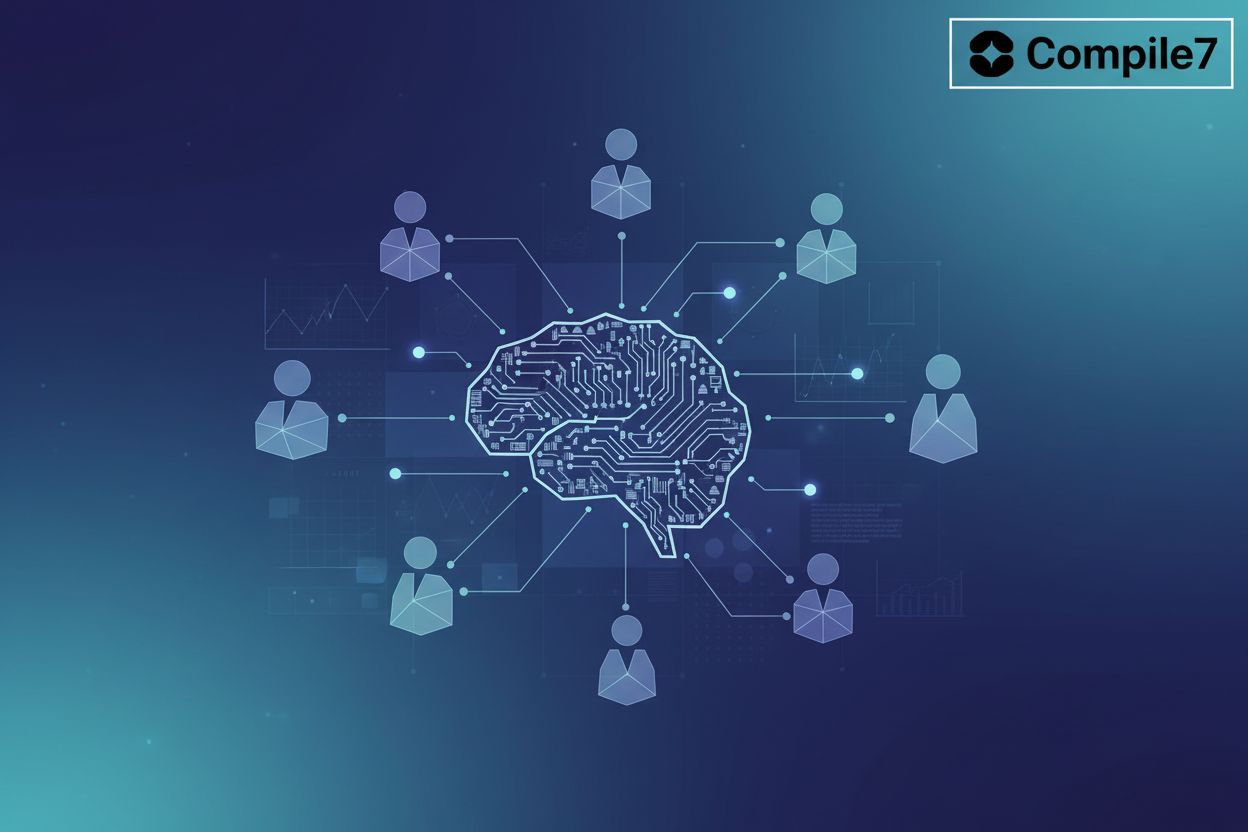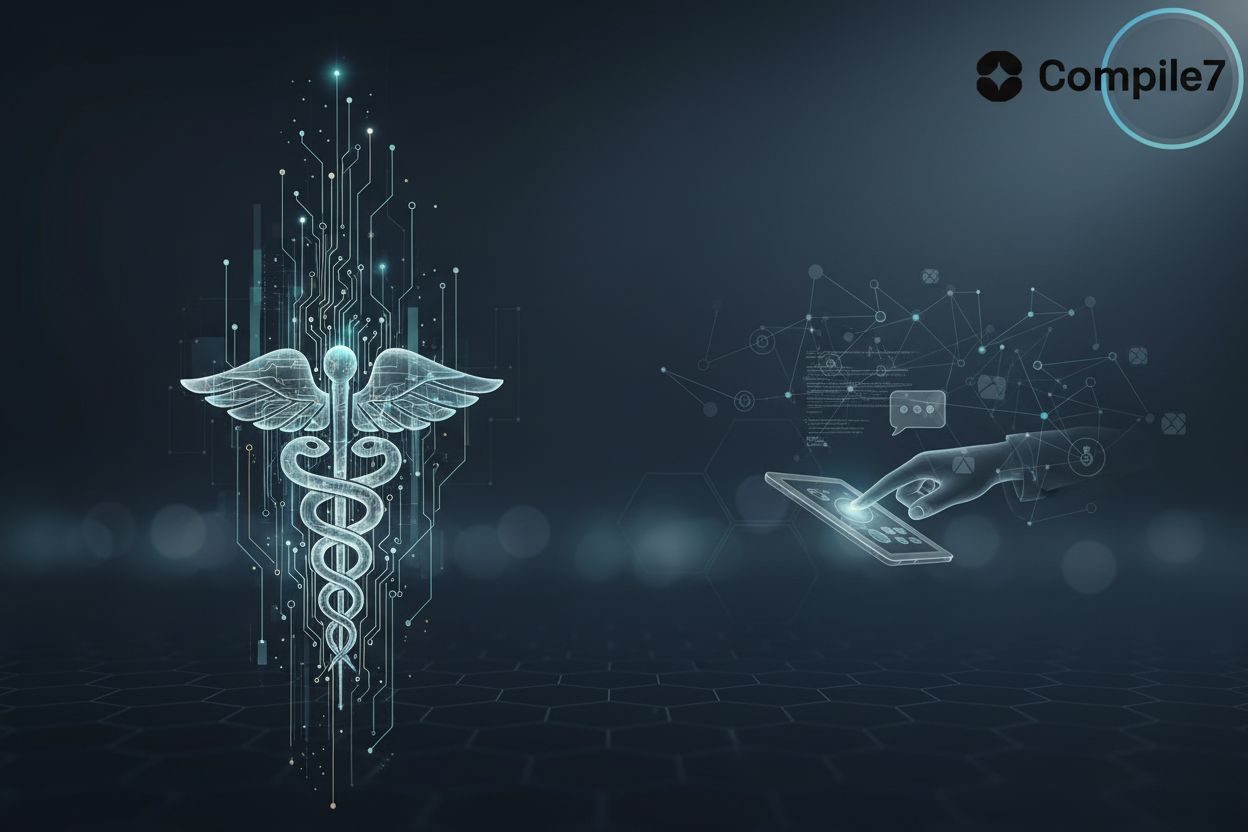AI Agent Orchestration
TL;DR
The Rise of AI Agents and the Orchestration Imperative
Alright, so, you're probably hearing a lot about ai agents these days. Are they just hype, or is there somethin' real there?
- ai agents are exploding in popularity in enterprise environments. Think of it like this, the serverless Postgres provider Neon is seeing ai agents create databases at 4x the rate of human developers. That's way faster than humans!
- Managing all these agents and related workflows, it's becoming a real challenge. It's easy for things to get outta hand.
- That's where orchestration comes in. A centralized strategy will help keep things efficient and avoid chaos.
Orchestrated agents can create end-to-end business processes. For example- think about onboarding new employees, customer service workflows, or even supply chain optimization. The business impact of ai agent collaboration? It's huge!
As cio.com notes, companies are deploying multiple llms and dozens of ai agents, mass adoption of ai integration and orchestration tools is likely.
Next up, we'll be diving into how AI agent orchestration frameworks work and why they're so important.
Understanding Frameworks
AI agent orchestration frameworks, sounds complicated, right? But it's really just about giving you the right tools to manage your ai agents, and it can be a game changer.
There's basically two main ways to think about this:
- Static orchestration is like having a pre-set plan. Frameworks like LangChain and AutoGPT are examples. You define the steps and tools in advance. This is great for tasks that don't change much, but not so hot if you need flexibility, and let's be honest-- who doesn't need flexibility?
- Dynamic orchestration is more like improv. Think OpenAI's Assistant API v2. It lets agents write and execute code on the fly. This means they can adapt to new situations and solve problems in ways you didn't even think of. How cool is that? OpenAI's Assistant API v2 is pretty neat because it allows agents to dynamically generate and run code, which is key for handling unexpected situations or complex computations without needing a human to intervene every time.
Choosing between these two is all about what you're trying to do. Static is easier to set up, but dynamic is way more powerful if you need to handle complex and changing tasks.
OpenAI's SWARM framework is a good example of how this can work. It's designed to help agents work together. Neurons Lab created a telco orchestration layer using SWARM, and each agent has specific jobs.
- The Triage Agent figures out who's best to answer a question.
- Then you got the OLT Agent for network stuff.
- CRM Agent for customer info.
- ACS Agent for configuration.
- And a Solution Agent that taps into a knowledge graph.
SWARM uses an agent-based architecture with a dynamic interaction loop. It's also stateless, which makes things easier to manage.
The dynamic interaction loop in SWARM means agents don't just follow a rigid sequence. Instead, they can communicate, delegate tasks, and react to each other's outputs in real-time. For instance, the Triage Agent might pass a customer query to the CRM Agent. If the CRM Agent needs more context, it might ask the Solution Agent to pull relevant data from the knowledge graph. This back-and-forth allows for much more flexible and intelligent problem-solving than a simple linear process.
It's all about breaking down complex tasks into smaller, more manageable pieces.
Now, what's next? We'll take a closer look into SWARM and how it can be used to build a telco ai agent orchestration layer.
The CIO's Role in AI Agent Orchestration: Strategy and Implementation
Alright, so as a cio, you're probably wondering how you're gonna wrangle all these ai agents, right? It's not just about buying the tech; it's about figuring out how it all fits together.
First things first, assess where your organization is at with ai. Is it just a few experiments, or are you knee-deep in deployments? Gotta know your starting point.
Then, pinpoint the business processes that could really use an ai agent boost. Think about areas where automation can save time, reduce errors, or improve customer experience. Maybe it's streamlining invoice processing, or personalizing product recommendations in e-commerce.
Don't forget to set some clear goals and metrics. What does success look like? Is it faster turnaround times, cost savings, or happier customers? Without goals, you're just throwing darts in the dark.
Now, the big question: build your own orchestration platform, or buy one off the shelf? Building gives you total control, but it takes time and expertise. Buying is faster, but you might have to compromise on features. For example, if you build, you can tailor every single aspect to your exact needs, but it could take months or even years. Buying might get you up and running in weeks, but you might find you can't do that one specific thing you really wanted.
Think about interoperability. Can the platform work with your existing systems and data sources? And is it ai-agnostic? You don't want to be locked into one vendor.
Don't forget about the total cost of ownership. Building might seem cheaper upfront, but what about long-term maintenance and updates? As Madrona notes, building ai infrastucture requires specialised talent.
Now, let's dive into some key considerations for making AI agent orchestration a reality.
Key Considerations for AI Agent Orchestration
Security and Governance in a Multi-Agent World
ai agent orchestration is cool and all, but have you thought about security? 'Cause it's kinda important.
- Addressing security risks is huge when agents are chattin' with each other. You gotta make sure they aren't accidentally leakin' sensitive info or gettin' tricked into doin' somethin' bad. Think about it: if an agent in a financial firm is compromised, it could lead to unauthorized transactions or data breaches. To mitigate this, consider implementing a zero-trust architecture where no agent is trusted by default, and all access is strictly verified.
- Implementing robust access controls and authentication mechanisms is a must. Not every agent should have access to everything. You need to control who can do what, and verify their identity, every step of the way. Multi-factor authentication, ai-driven threat detection, the works. For instance, you could use role-based access control (RBAC) to define granular permissions for each agent based on its function.
- Ensuring compliance with data privacy regulations like gdpr or hipaa, is non-negotiable. If you're dealin' with personal data, you better be followin' the rules. For example- in healthcare, agents accessing patient records need to be compliant with HIPAA to protect patient confidentiality. This might involve anonymizing data before it's processed or ensuring data is only accessed within secure, compliant environments.
Data Management and Integration Challenges
Okay, data's the fuel for these ai agents. But getting it all connected? That's where things get tricky.
- Connecting ai agents to diverse data sources is a pain, especially if you have legacy systems, cloud platforms, and apis all over the place. You need to make sure these agents can actually access the info they need. Like, in retail, agents might need to pull data from old inventory systems, cloud-based customer databases, and third-party marketing apis. Tools like data virtualization or robust ETL (Extract, Transform, Load) pipelines can help bridge these gaps.
- Ensuring data quality and consistency across workflows is also critical. If the data's bad, the agents are gonna make bad decisions. Think supply chain: if product data is inconsistent across different systems, ai agents makin' decisions could cause delays or errors. Implementing data validation rules and data cleansing processes before data is fed to agents is crucial.
- Managing data pipelines and etl processes for ai agent consumption is also a big job. You need to clean, transform, and load data so the agents can use it efficiently. A good example is finance, where agents need clean, accurate, and real-time data from various sources to make informed investment decisions. Consider using data cataloging tools to track data lineage and ensure its integrity.
Monitoring and Optimization: Keeping Your AI Agents Performing
So, your agents are up and runnin'. Now how do you make sure they're pullin' their weight?
- Establishing monitoring dashboards to track ai agent performance is essential. You need to see what they're doin', how well they're doin' it, and where they're messin' up. Dashboards can show things like task completion rates, error rates, and resource usage. Tools like Datadog or Grafana can be configured to provide these insights.
- Identifying bottlenecks and areas for improvement is also important. Where are the agents gettin' stuck? What's slowin' them down? Maybe it's a slow api, or a poorly designed workflow. Gotta figure it out and fix it. Analyzing logs and performance metrics can help pinpoint these issues.
- Implementing feedback loops to continuously optimize ai agent behavior is key. Agents should learn from their mistakes and get better over time. This could involve things like reinforcement learning, or simply adjusting their parameters based on performance data. For example, if an agent consistently fails on a certain type of query, the system could be updated to provide it with more relevant training data or adjust its decision-making parameters.
All this is kinda the boring stuff, but it's what separates a cool demo from a real, workin' system.
Real-World Examples and Use Cases
So, you're probably wondering where all this ai agent stuff is actually being used, right? It's not just theory, it's happening now!
- Customer Support: Talkdesk's ai agents are providing 24/7 support in retail, healthcare, and telecom. What they do is handle routine inquiries, which leaves human agents to deal with more complex issues. Talkdesk's ai agents are using contextual understanding and crm data to personalize responses and automate customer relationship management which is pretty cool.
- Supply Chain Optimization: Flexport ai is using autonomous agents to reroute shipments and manage customs documentation. These agents help optimize logistics paths, and that helps minimize disruptions.
- E-commerce Product Management: Hypotenuse ai is an ai agent-building platform trained for e-commerce. It uses llms to automate content generation and product data management, adapting to brand voice and correcting inconsistencies at scale. Hypotenuse AI achieves this by analyzing existing brand content to learn its tone, style, and vocabulary. It then uses this learned information to generate new product descriptions or marketing copy that matches the brand's voice. For correcting inconsistencies, it can scan existing product data for discrepancies in formatting, pricing, or feature descriptions and automatically flag or fix them.
For example, imagine a financial services firm using an agent-based system to automate underwriting. An agent could pull data from various sources, analyze risk, and generate reports, all with minimal human intervention.
It's worth mentioning that as cool as this is, we do need to be thinking about ethics. Things like data privacy, algorithmic bias, and making sure we aren't emotionally manipulating anyone are kinda important.
Alright, so next up, we'll take a look at case study 1 and how ai agent orchestration is automating customer support.
The Future of AI Agent Orchestration
Are ai agents the future, or just another tech fad? Well, it seems like they're here to stay, and they're only gonna get more sophisticated.
- The convergence of horizontal and vertical ai tools is already happening. Microsoft Copilot now integrates with Epic ehr, and ibm watsonx partners with domain vendors for specialized modules. This means more tailored solutions for specific industries.
- We're moving from automation to autonomous decision-making. Nvidia's nim Agents, for instance, can simulate and choose the best strategies, while sap Joule adjusts pricing based on real-time inputs. It's not just about automating tasks; it's about letting ai make smart decisions on its own.
- Compliance and ethical considerations are becoming increasingly important. The eu's ai Act mandates stricter auditability, and ai vendors are including agent oversight tools by default. We need to make sure these agents are used responsibly and ethically.
The ai agent landscape is changing fast.
It isn't just about efficient growth — this transformation signals something deeper. As clear patterns for successful agent applications come into view, founders are rushing to embrace and extend what works.
Looking ahead, expect to see even tighter integration between horizontal and vertical platforms. The best ai agent platform for you will depend on your industry, use case, and tech stack.
Whether you're orchestrating multi-agent automation or just starting out with agentic ai systems, the platforms discussed can help automate workflows, reduce operational costs, and improve enterprise efficiency.






